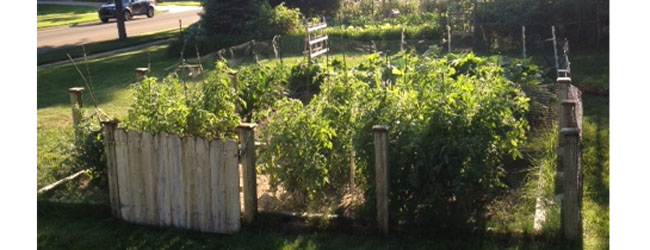Although having a vegetable garden is something that isn’t very popular among high school students, it is an activity that can turn into a passion very quickly. Few things are more rewarding than being able to literally see the “the fruits of your labor”. If done properly, one can expect hours of summer entertainment and a vast abundance of fruit.
One of the most important things is the area in which one starts their garden. Despite how obvious it may seem, plants needs a lot of sunlight to grow, so when considering where to start a garden, one should consider an area with not to many trees that block the sun. Another basic includes, making sure the soil is of good quality and can be saturated properly. Black soil is the best for planting and clay or muddy areas should be avoided. Plants need soil that is rich in nutrients and soil that can easily hold water. It is recommended that when one plants their plants, they should add peat moss to further increase the amount of nutrients in the soil.
Another important idea one must remember when producing a successful garden is that plants do grow bigger over time which means one must consider this when planting them to ensure correct spacing. On the back of almost every seed bag or on that little piece of plastic that comes with buying plants, it usually mentions how much space should be given in between each plant. When doing spacing, it is always better to give a little more than needed and be on the safe side rather than finding out in the middle of July that all of ones plants are competing for a small spot of space. This competition can inhibit growth of these plants since the environment just can’t provide enough growth factors for all of them. Senior Mark Debney, an gardener for three years now, made this mistake in his first year.
“My first year I didn’t really know what I was doing so I just kind of didn’t pay attention to where I put the plants and they ended up growing on top of each other and pretty much trying to kill each other,” Debney said.
Something that goes along with spacing is knowing what your plant does when it is growing and even after it matures. There are so many types of vegetable plants and they all behave in different ways. Most kinds of cucumbers for example, are climbers. This means that they will latch onto anything around them like a fence or a pole and wrap themselves around to grow more. Because of this, one should not have their other plants around cucumbers or else the cucumbers will attach onto them and cause much harm. Other climbers such as pole beans or sweet peas must be planted next to something like a truss that they can climb up, allowing them to reach their mature form and start producing vegetables. Other vegetables like zucchini and squash tend to grow very large leaves that can block the sunlight from plants that don’t grow very high off the ground located around them. Other plants like tomato plants grow high off the ground and produce large amounts of vegetables, but because of this large amount being produced, their stems can’t support the plant causing it to fall to the ground where it is more susceptible to stem damage or insect infection. To prevent this, one can buy tomato cages in which the plants grow within and have something to support themselves on, preventing any damage.
The last important thing one must have in order to produce a successful garden is hard work that is required. Starting from day one, a garden requires a large amount of work. One must be making sure that it always has enough water in its soil, they must be constantly weeding the garden to prevent foreign plants from taking over space and essential growth factors, they must always be making constant modifications to plants to help them grow better, but most importantly along with hard work is patients. No plant will immediately start producing vegetables days after it has just been planted. It takes anywhere from 60 to 80 days for most plants to start seeing edible results. However even before that, one cannot just abandon their plants, they need to be taking care of them so they grow healthy enough that when the day comes, they are able to produce large amounts of produce. Senior Blair Subbaraman is creating a garden for the first time this year and is well aware of all the work it is going to take.
“Already I have put in a bunch of work, I had to clear the land then rototill it, then I had to make mounds and plant everything and now I’m constantly making sure they are getting enough water,” Subbaraman said. “But hopefully this will all pay off at the end.”
By following all these instructions, one can produce a successful garden that will no doubt demand a lot of time and effort, but it will also give back and create a satisfactory feeling few other things can match.


